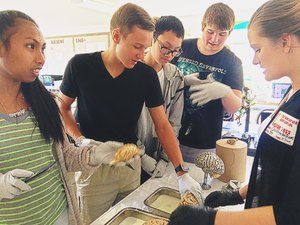Post by CoreyAnne Russell, Science Teacher, Fort Vancouver High School/Center for International Studies
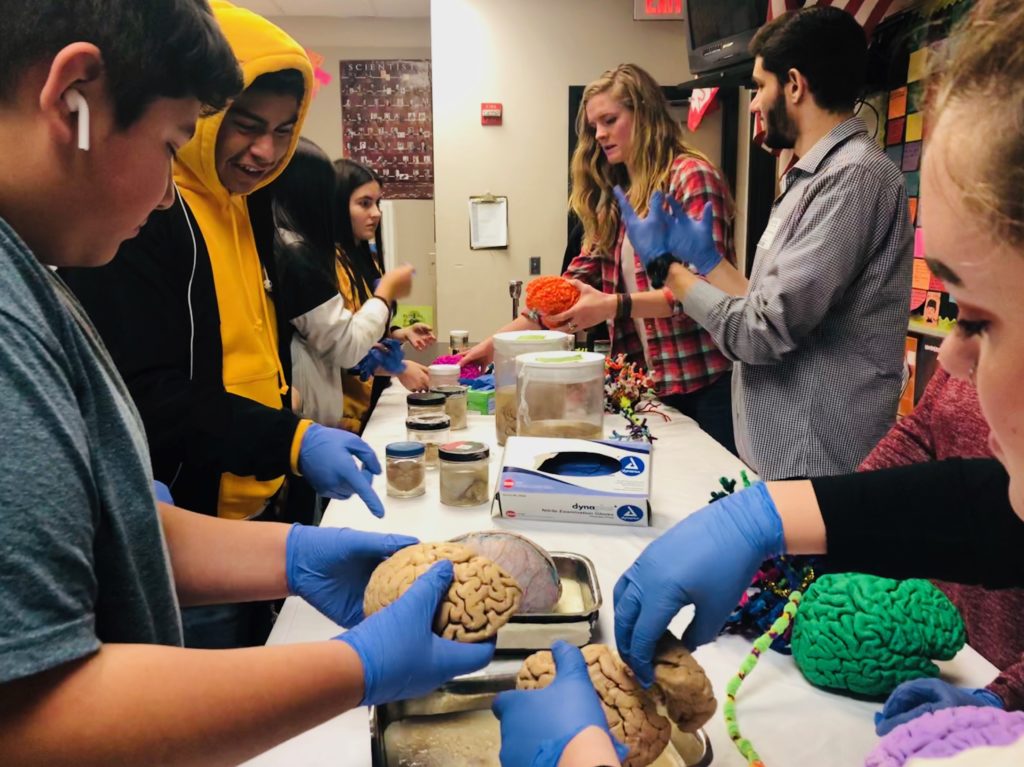
NW Noggin volunteers are honored to work alongside CoreyAnne Russell and other science teachers at Fort Vancouver High School, the Home of the Trappers!
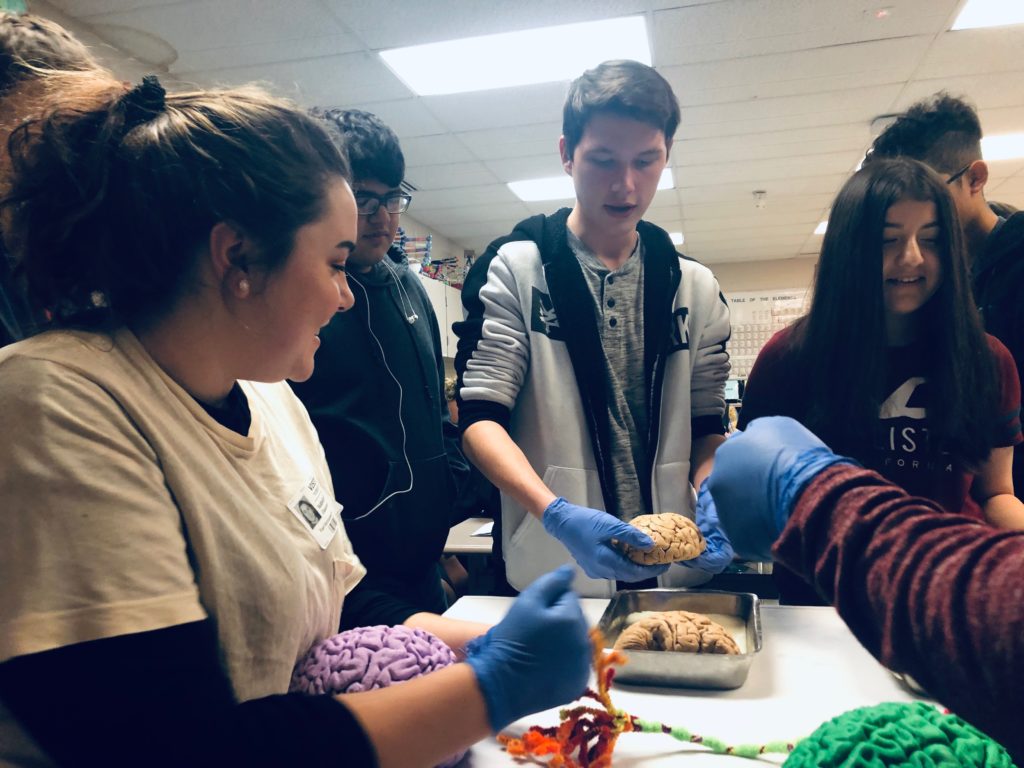
Their students have dissected sheep brains and viewed live brain surgeries at Providence St. Vincent Hospital. They’ve asked insightful questions about neuroscience research and made brain-related art – even crafting pipe cleaner neurons that hung as a vibrant neural network at the Portland Art Museum!
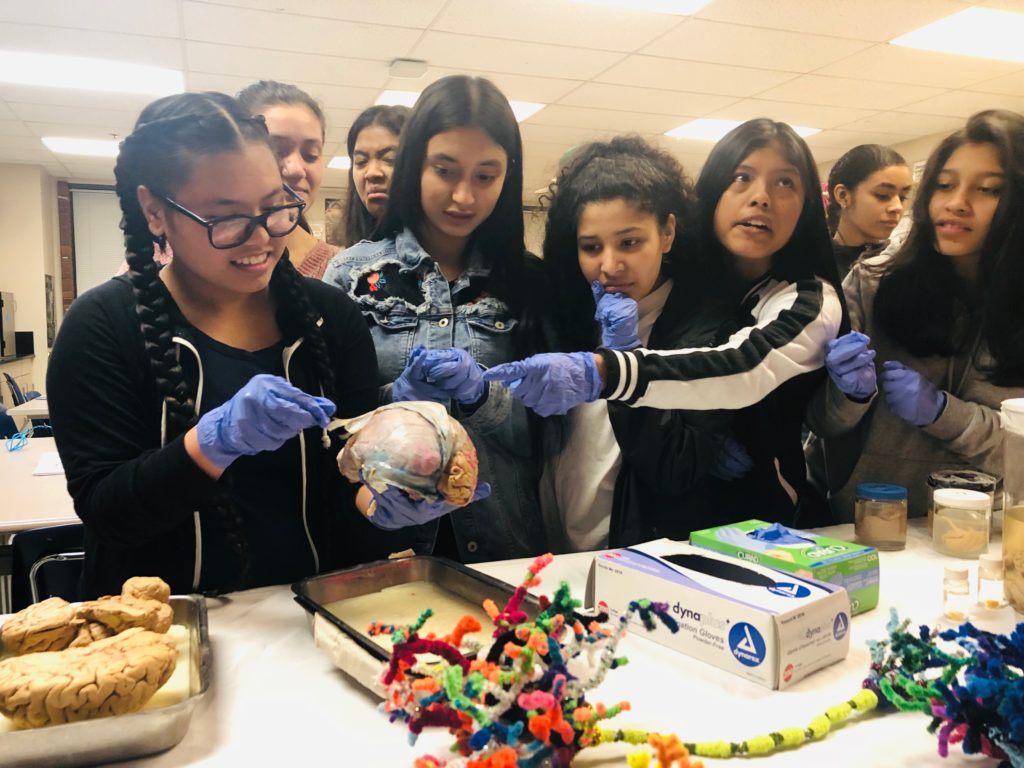
Our thanks to CoreyAnne for her perspective on collaborating over the last five years…
LEARN MORE: Trap Squad!
LEARN MORE: Ventricles in Vancouver!
I have been teaching high school biology in the Vancouver School District for seven years. In the public school, our education curriculum is guided by state and federal standards known as the Next Generation Science Standards.
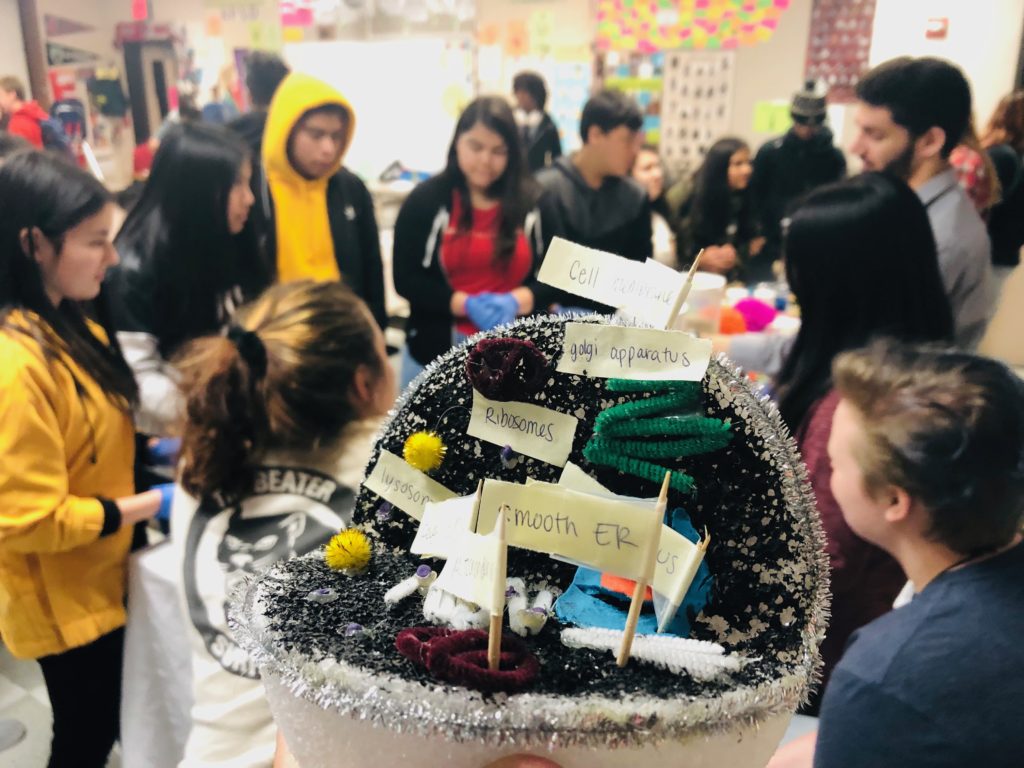
In one year students are expected to learn more than 25 biological concepts from microscopic to macroscopic interactions. Due to the pressure of teaching all standards in a given school year, teachers can sometimes rush the learning experience as well as limit specific scientific content.

Five years ago, I was connected with an all volunteer program called NW Noggin. This independent non-profit is a combination of volunteers who include neural science and art professors from Portland State University (PSU), aspiring neuroscientists, psychologists and neuroscience and psychology researchers from PSU, Oregon Health & Science University (OHSU) and other collaborators, as well as local artists aiming to connect science & arts education.
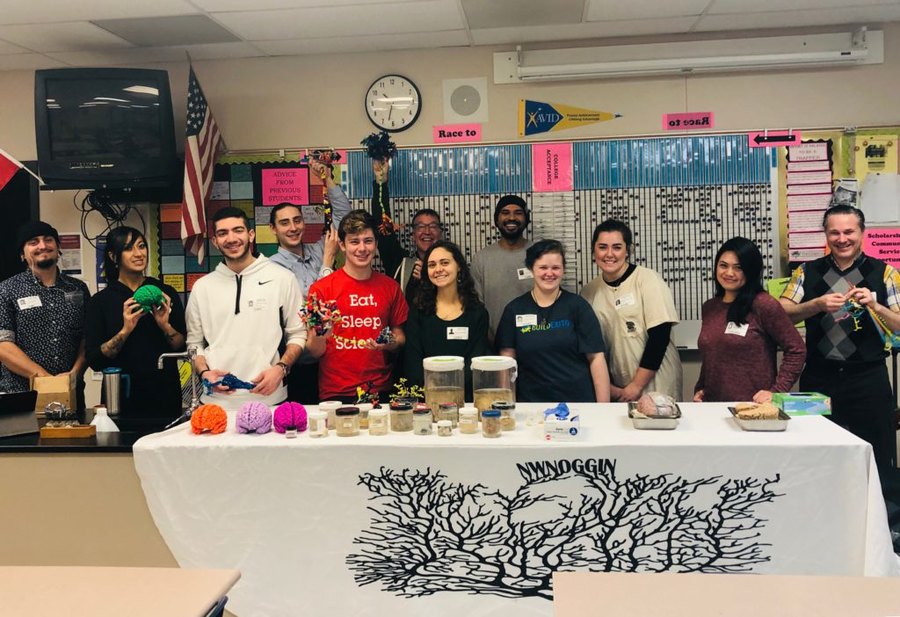
Recent NW Noggin volunteers at Fort Vancouver include Jordan Ray, Jade Osilla, Ali Mirzazadeh Javaheri, Aaron Eisen, Jesse Benefiel and McKell Barrett from Portland State University, AJ Mitchell from OHSU, Sawyer Perry and Isabella Maranghi from NIH BUILD EXITO at PSU and Ruth Marigomen from WSU Vancouver.
When this group enters the room, they bring an assortment of colorful hands-on models including 3D printed brains, pipe-cleaner neurons, a variety of brains from fish to human, and demonstrate a visible enthusiasm for brain education. Students can, for example, use EKG machines to control each other’s muscle movement using their own brain-directed movements!
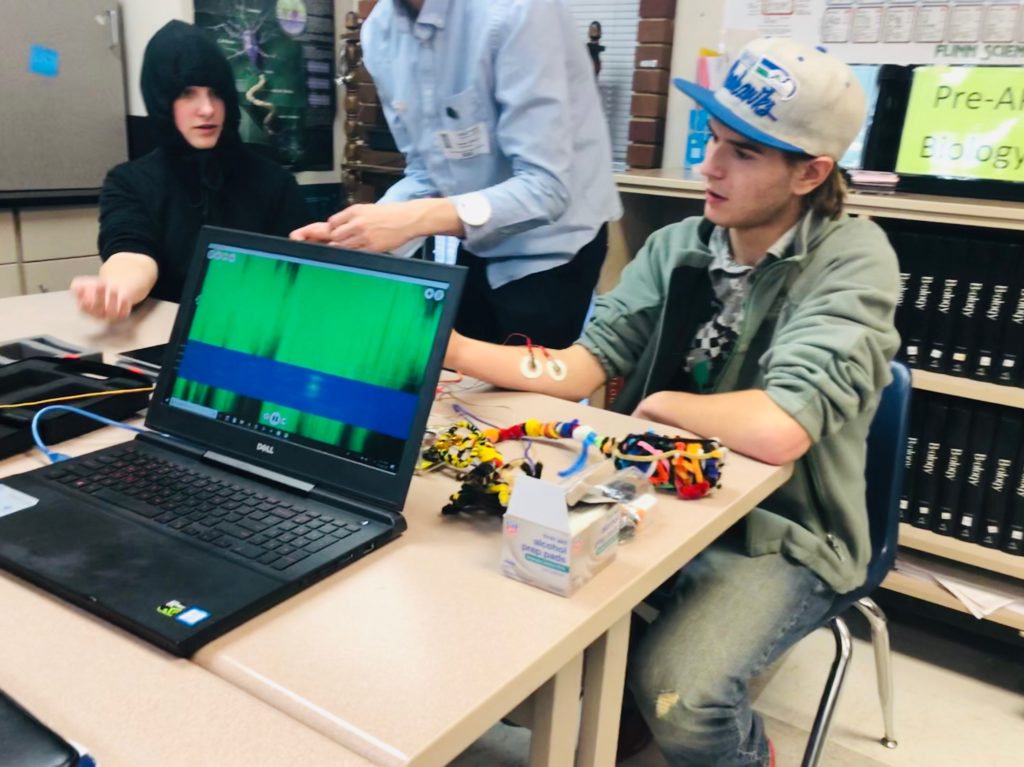
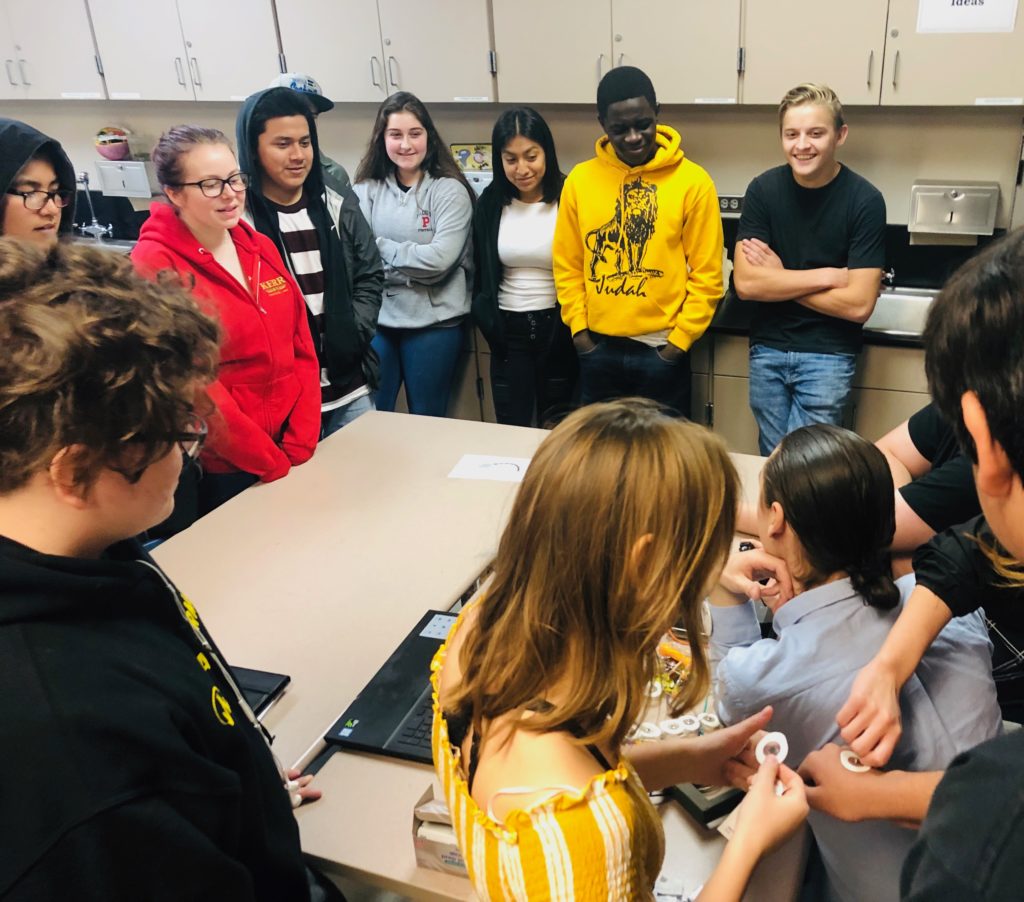
LEARN MORE: Backyard Brains Human to Human Interface
Recently, NW Noggin provided another opportunity for 20 students from my Biology class to watch a live brain surgery at Providence St. Vincent Medical Center in Portland, OR. Students learned about many medical careers, met the neurosurgeon pre and post-surgery, asked questions about the experience and gained valuable exposure to the medical field.
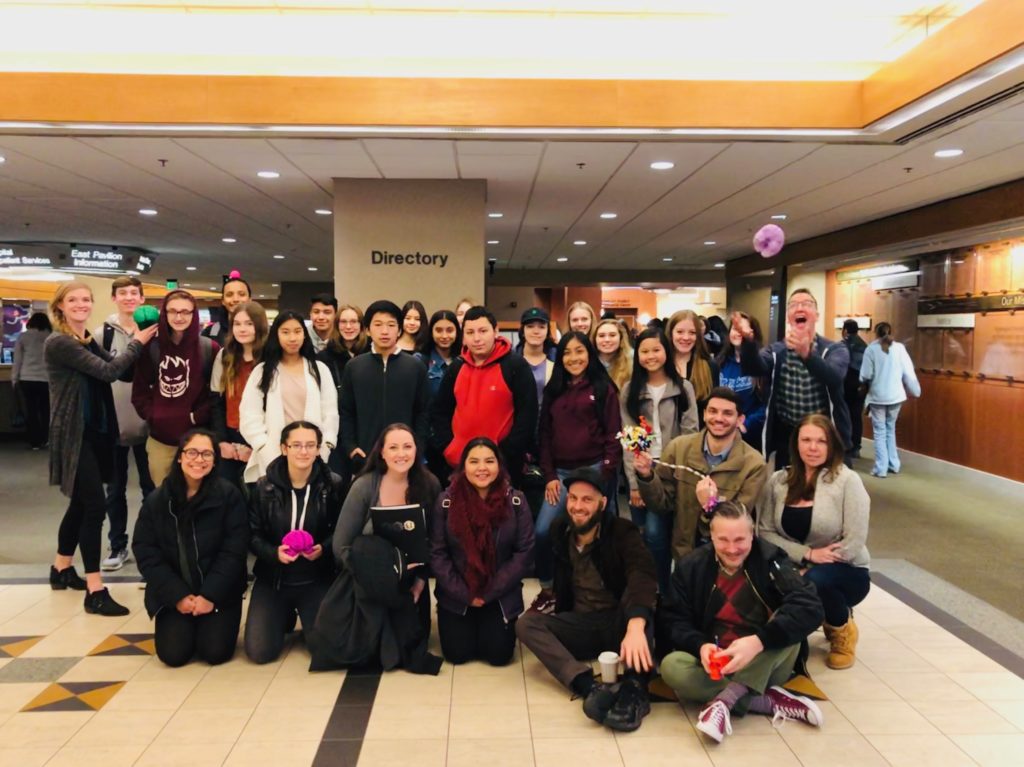
LEARN MORE: What is brain surgery like?
I truly believe that the most powerful learning experiences come from eliciting a student’s intrinsic inquiry. That is precisely the experience NW Noggin provides for my students at Fort.
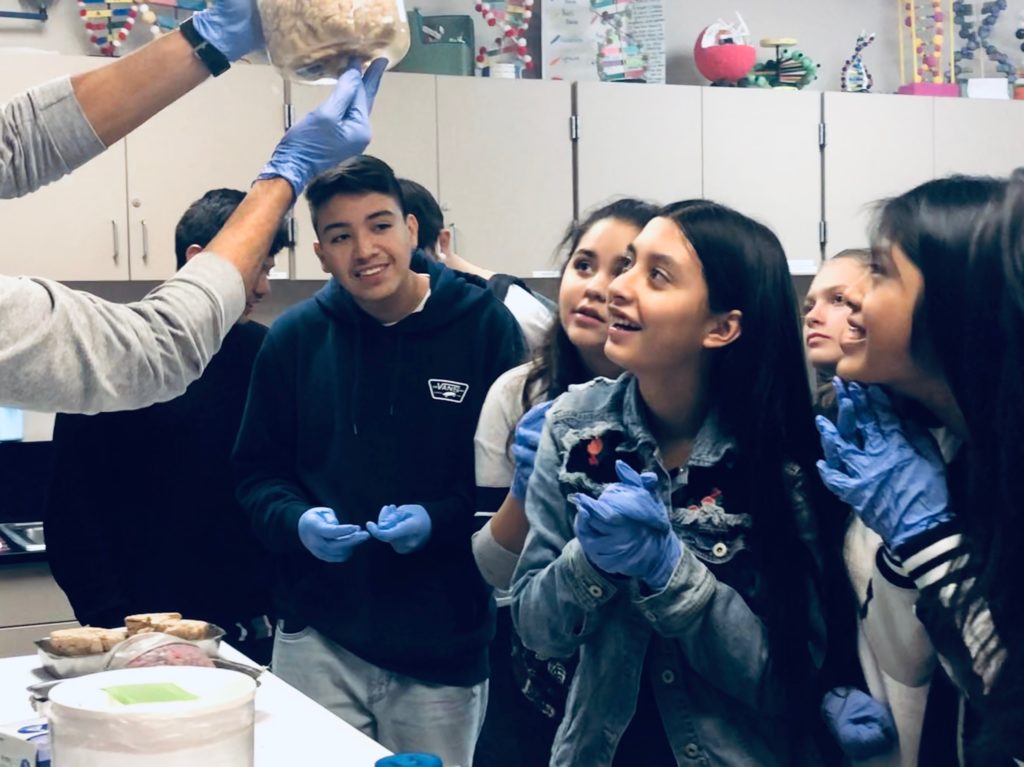
Students have the freedom to ask any questions and are greeted with a detailed response, often with real-life applications. The group visits four times throughout the school year starting with the basic structure and function of the brain and neurons. In the spring students use their knowledge to dissect sheep brains.
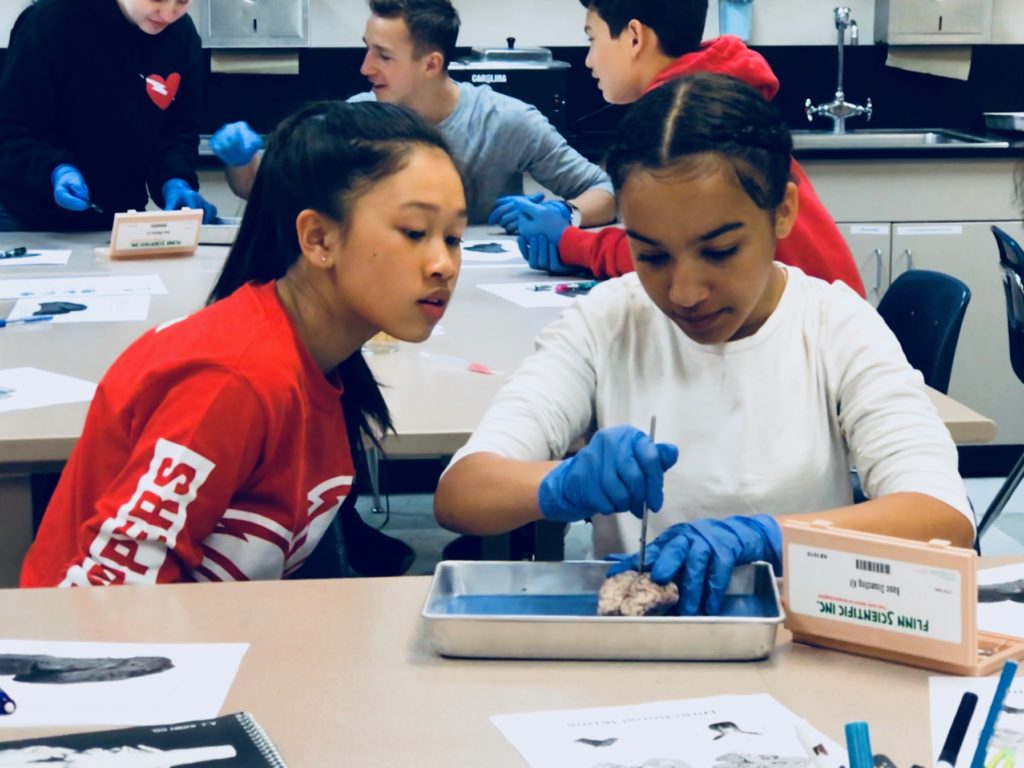
One focus the program has revealed to students is the biological evidence supporting later school start-times to match more closely to the circadian rhythms (internal clocks) of the teenage brain. It has motivated many students to speak out about this issue. More importantly, it has shown students the value of using evidence to support a given claim.
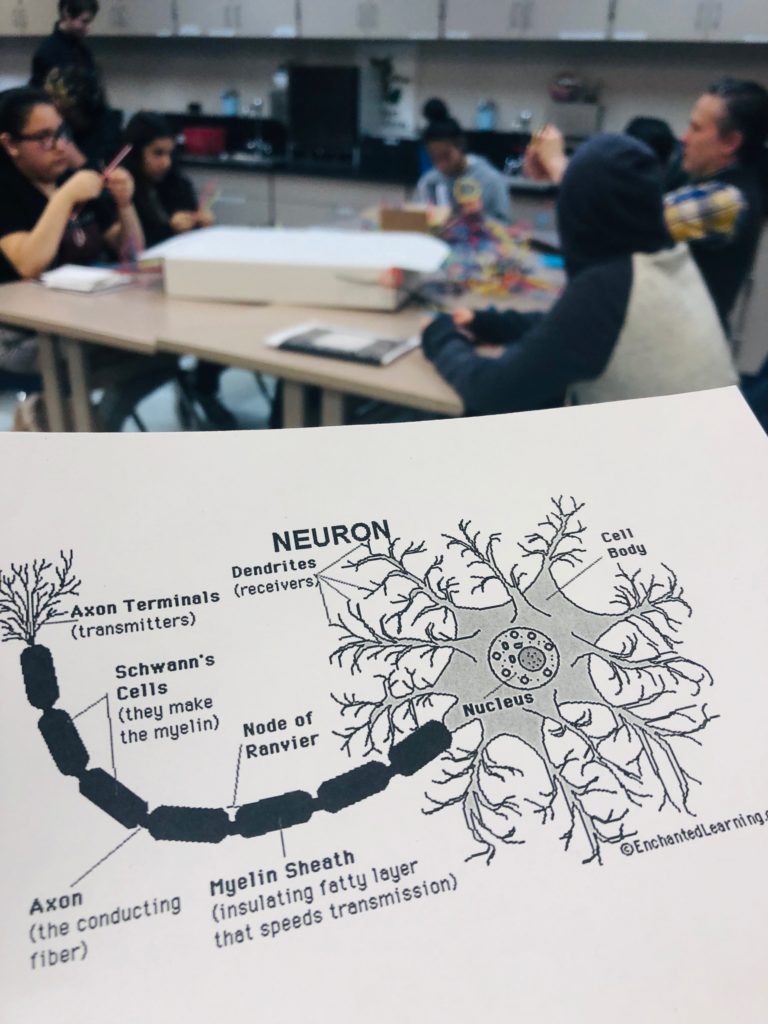
LEARN MORE: Brains, biofeedback & SLEEP
The program has also impacted my own approach to teaching. NW Noggin reminds me of the value of the student experience and that although there is a push to teach to state mandated standards, sometimes it is more important to provide real life learning opportunities to enhance a traditional education.
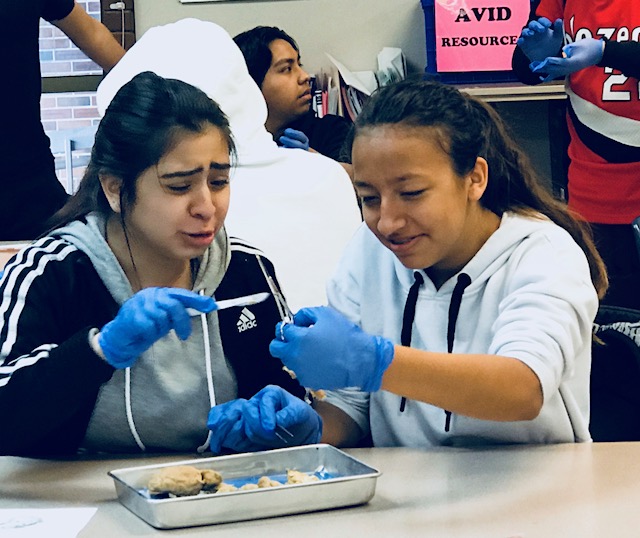
A question I have been asked when approaching lesson and unit planning is “If you ask yourself what your students will remember in 5 years what would it be?” For many of my students their answer will likely be “I remember the brain people and the time I held a human brain.”
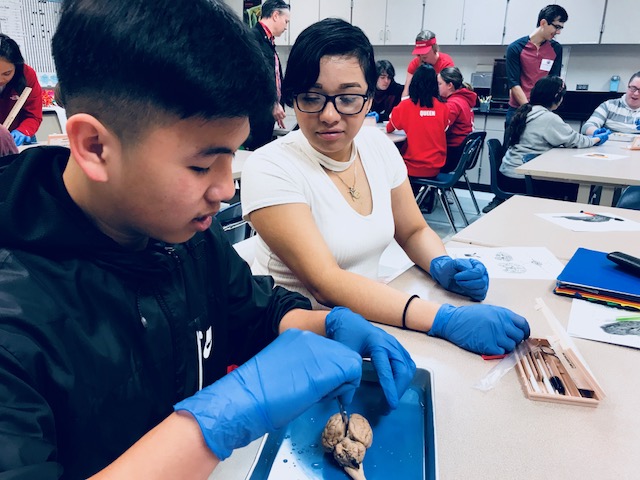
The best way I know to share how this program is enhancing my students learning experience is to share their comments. Below is a list of student comments about their favorite parts of NW Noggin visits:
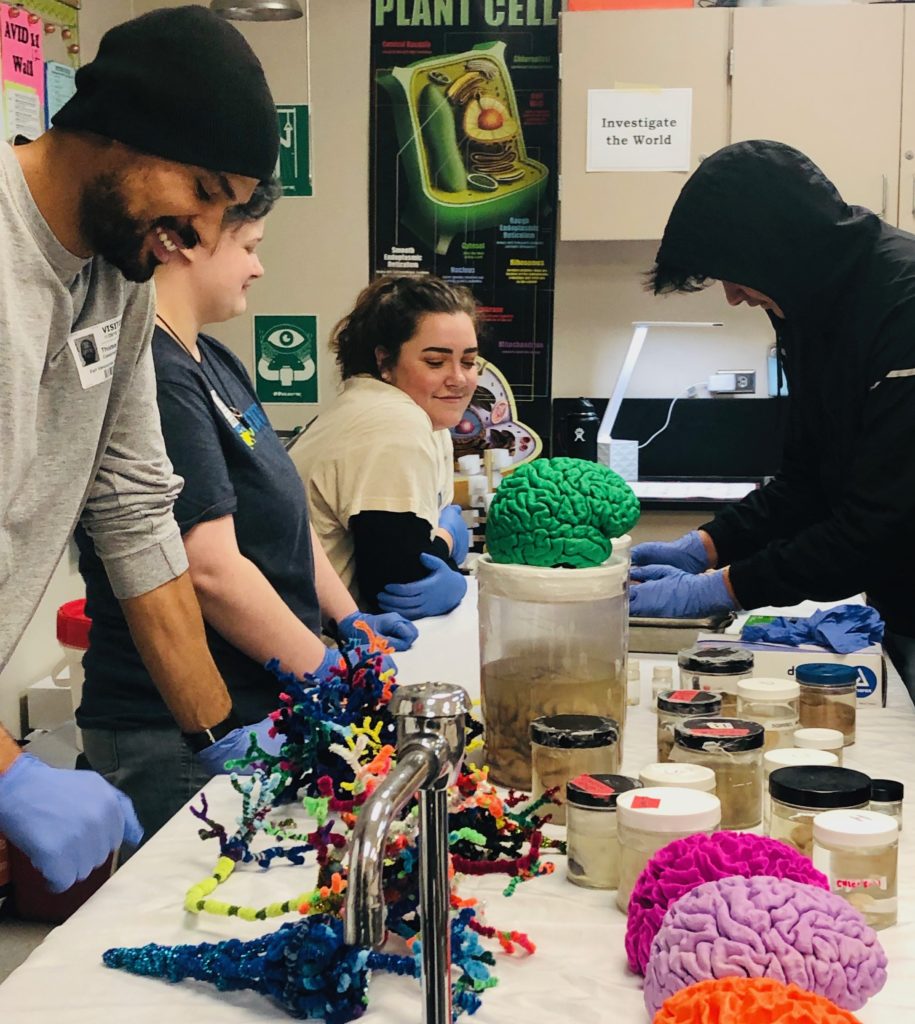
“I found the fact that they came on their own time to show us how our brain works and what the electricity in our body is capable of doing, not only interesting but motivational. My favorite part was when we were able to control the robot arm and another person via slight muscle movement. I enjoyed this experience a great deal, again thank you NW noggin.” -6th period student
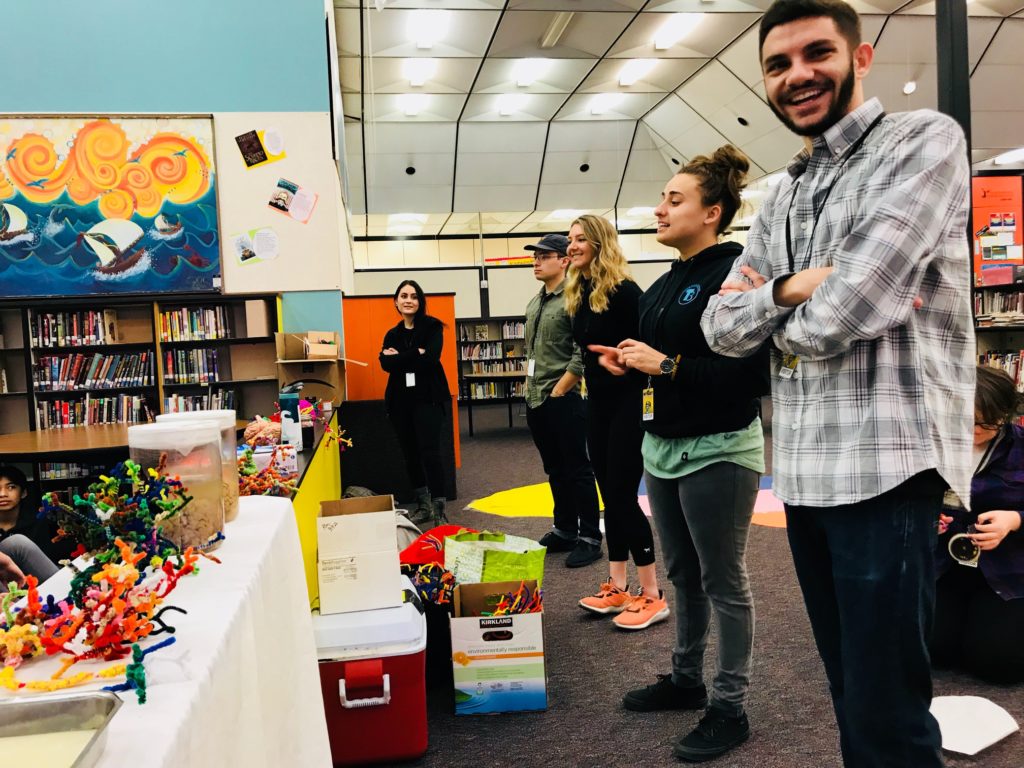
“Yesterday was a very interesting experience. I saw a lot of cool waves. I noticed some of the tiniest psychedelic details of activity waves. The waves formed a lot of patterns of trippiness. I think it be interesting to assess my brain activity waves.” -3rd period student
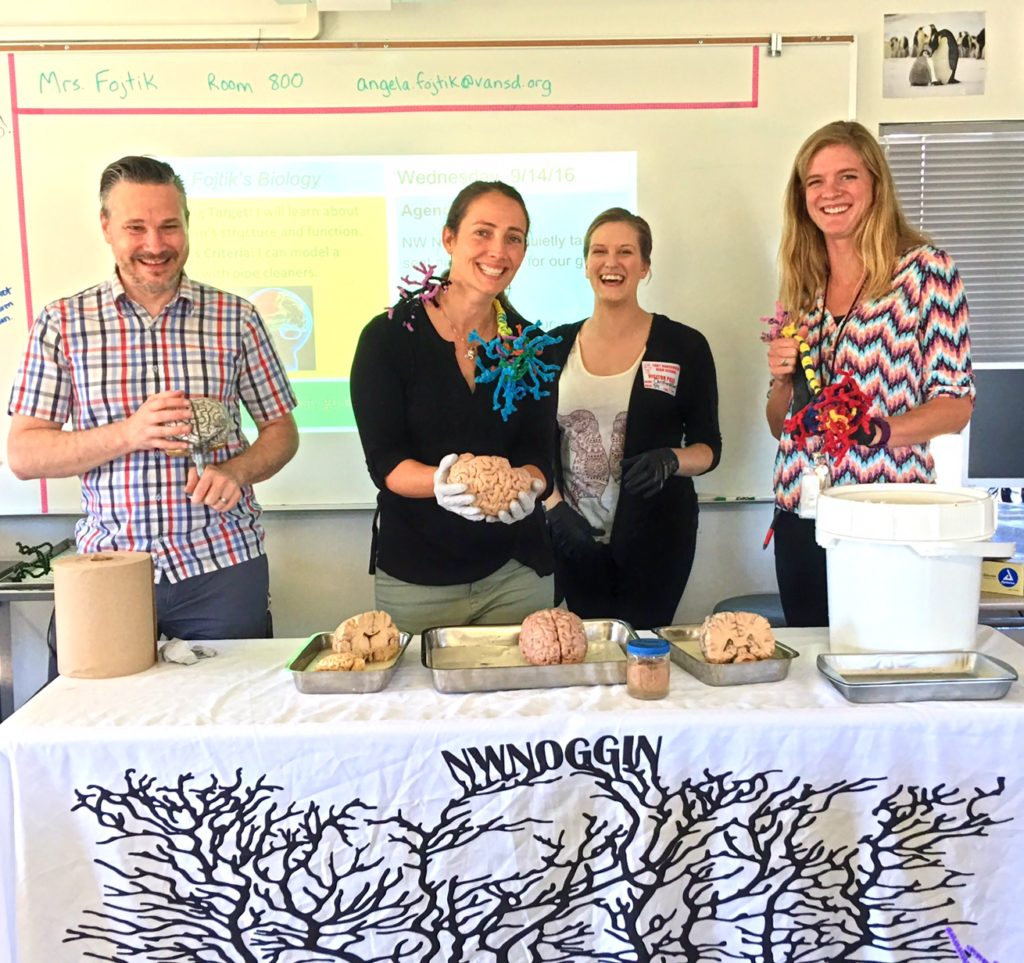
“I thought it was cool that we could control or be controlled with receptors and pulses of electricity. I liked holding the halve [sic] brain the whole one was weirdly squishy.” -4th period student

“It was really interesting to look and hold a brain in person, I really liked that you guys answered each of our questions that we had. You guys had varieties of different things to do, I learned lots from this experience.” -Another 4th period student
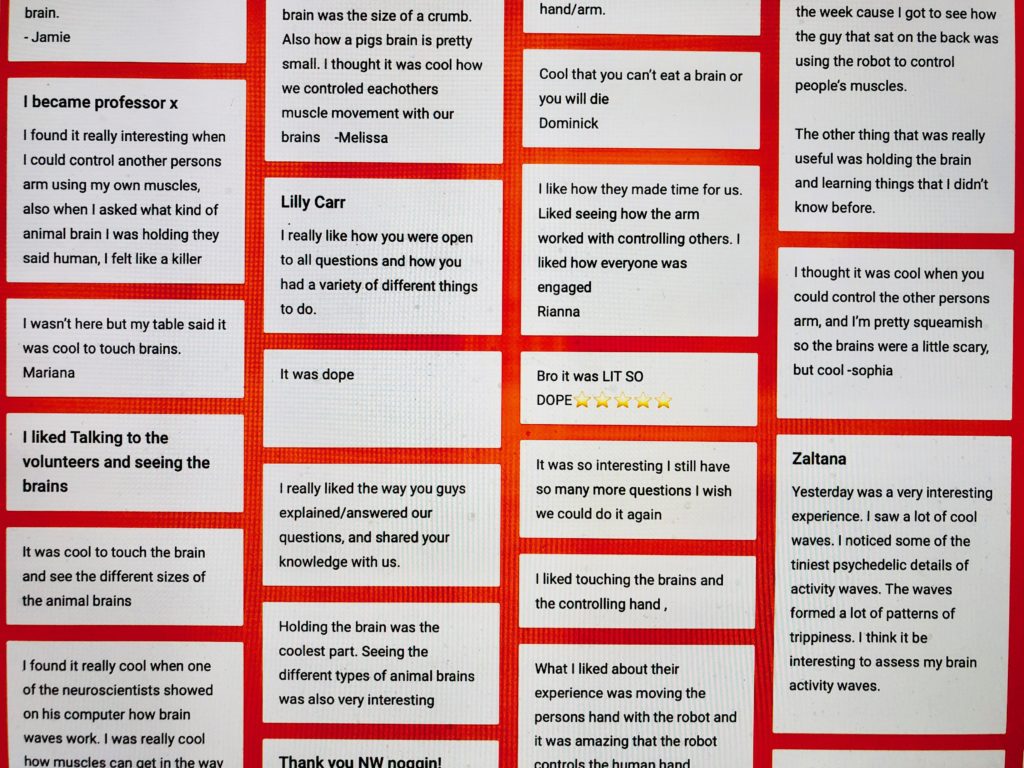
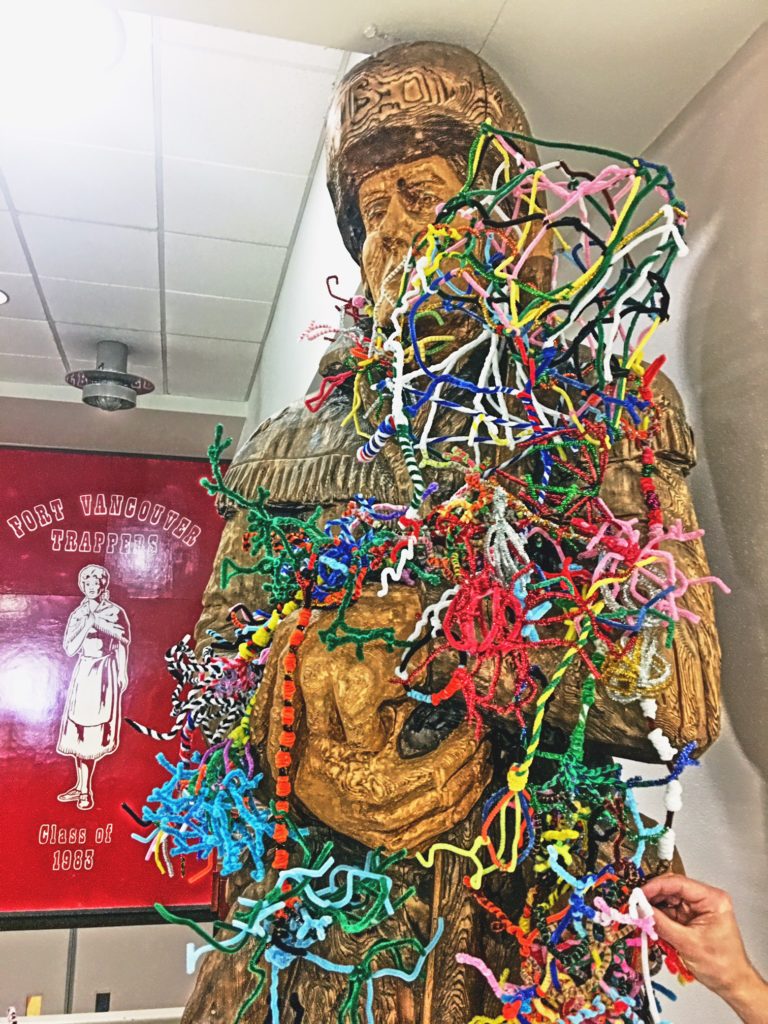
Much appreciation, CoreyAnne Russell
FVHS CIS Science Teacher
Trap Squad!
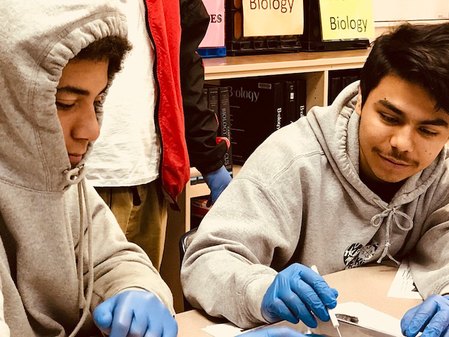
Brains, biofeedback & SLEEP
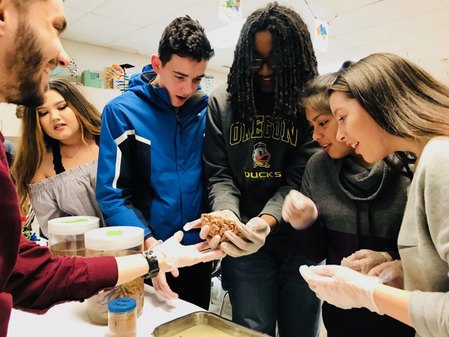
Ventricles in Vancouver!
